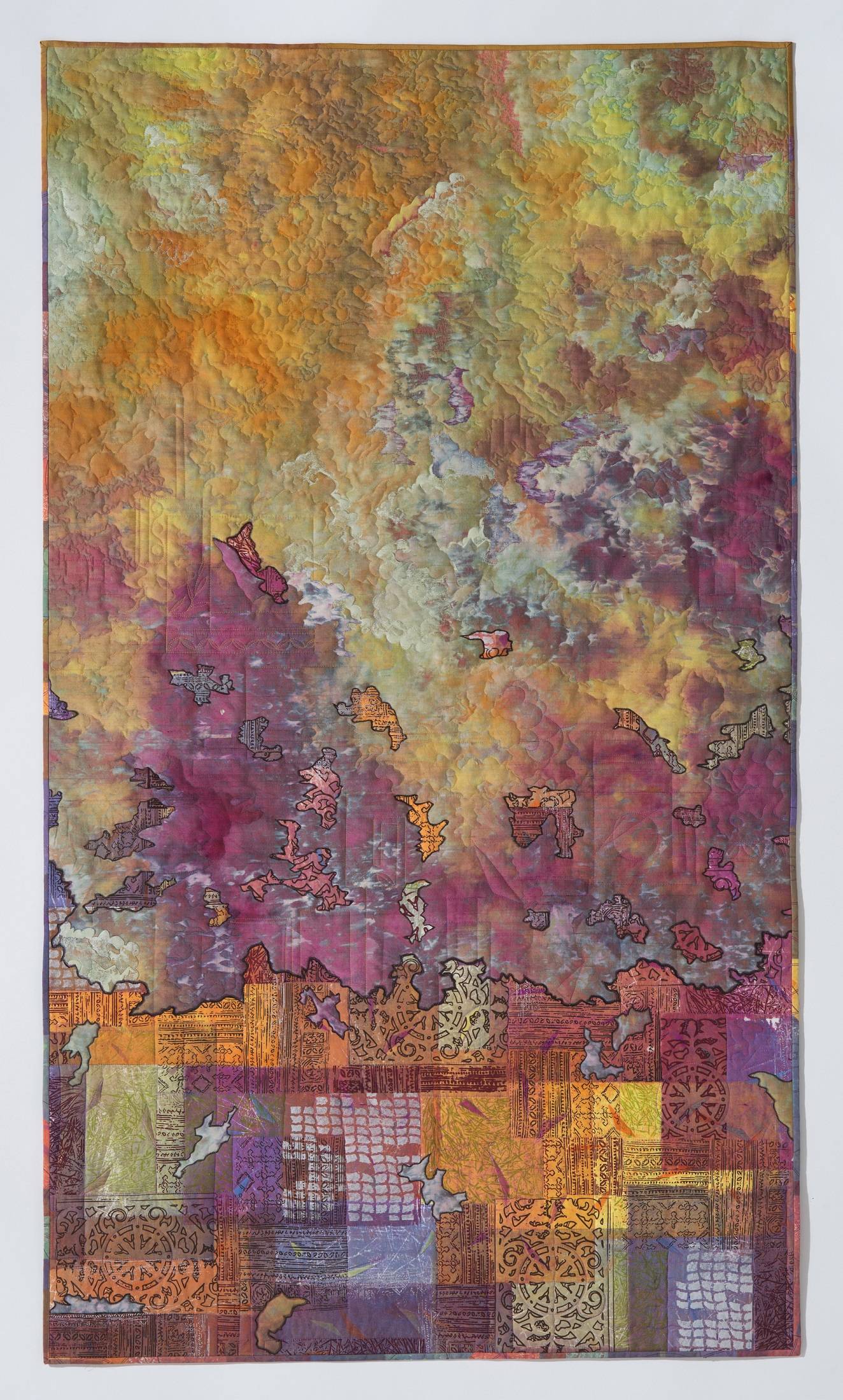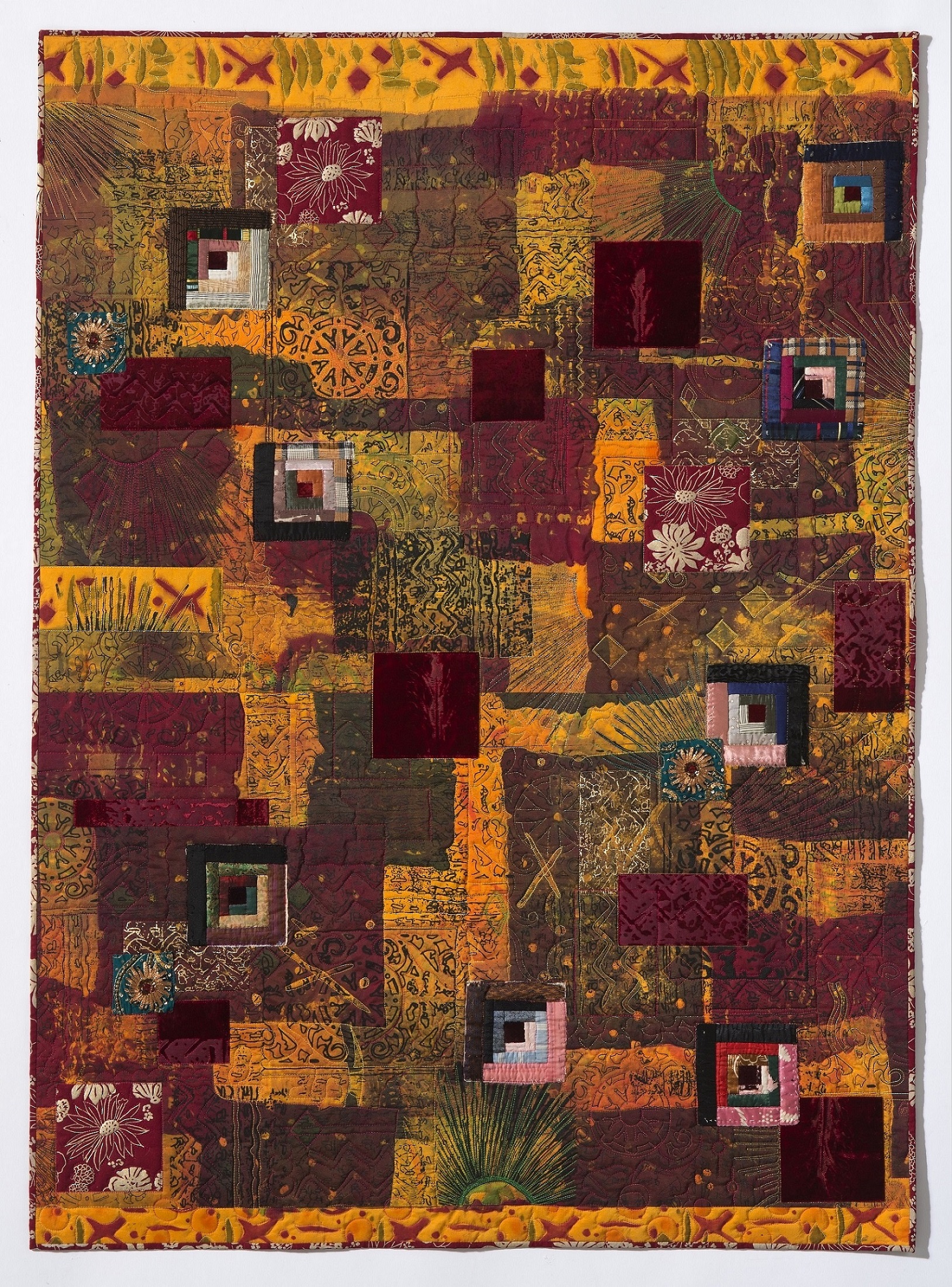Ileana Soto
Caravan, La Bestia, 2021
Silk broadcloth, linen, silk organza, various vintage cottons; hand dyeing , fusing, thermofax screens 22" h x 37" w
My work is tied to a commitment to personal deepening, expression and exploration. I strive to create a dialogue between myself, world events, and the cloth. Step by step, complexity is reflected in the layering of dye, paint, and cloth over cloth. Here, I visualize the dangerous journey to our southern border. La Bestia, a train, a caravan, represents the means of transport that migrants and refugees have used to reluctantly leave a place they have loved. It is a means to escape war, violence, abuse, or economic deprivation for the chance of a better life in another land.
Ileana Soto
Heated Boundaries, 2019
Silk shantung, Kona cotton; hand dyeing, thermofax screen, textile paint, Fabrico pens, fusing. 68" h x 39" w
Since 2016, I have been responding through fiber art to the wildfires around me in California, first the Santa Rosa fire, then the Camp Fire in Paradise, CA, then the Australian bush fires, and now, the many fires of the west coast, from California to Oregon to Washington State. Fire occurs naturally in our wild areas, part of the dynamics of nature. However, climate change, because of unregulated industry practices and unmanaged human activity, has brought us extreme and violent fires. The closer that populated areas and “the wild” come, the greater the danger of those boundaries becoming “heated”. Think about this moment in our lives as we await, again, the cycle of our fire season. We’re learning that racial, economic and climate justice are interrelated. Righting these injustices can be our personal and national priority in 2021.
Ileana Soto
Silk Road, 2020
Silk, velvet, vintage silk log cabin blocks, fragments of dress from India 51" h x 37" w
East and West civilizations and ideas have intersected through Silk Road commerce for 2400 years: China, Korea, Japan, India, Persia, Arabia, Europe, The Horn of Africa, reaching to the Americas. The silks in this piece originated in these communities, utilized by American quilters in the vintage log cabin blocks. Global cross-fertilization exists today in spite of war, climate displacement, and the pressures of economic, racial and cultural misunderstanding and injustice. Today, we recognize that global trade can include exploitation of people to make these products. Our inter-connectedness now includes a vigilance to know the conditions under which our goods are produced. Connection brings with it responsibility.


